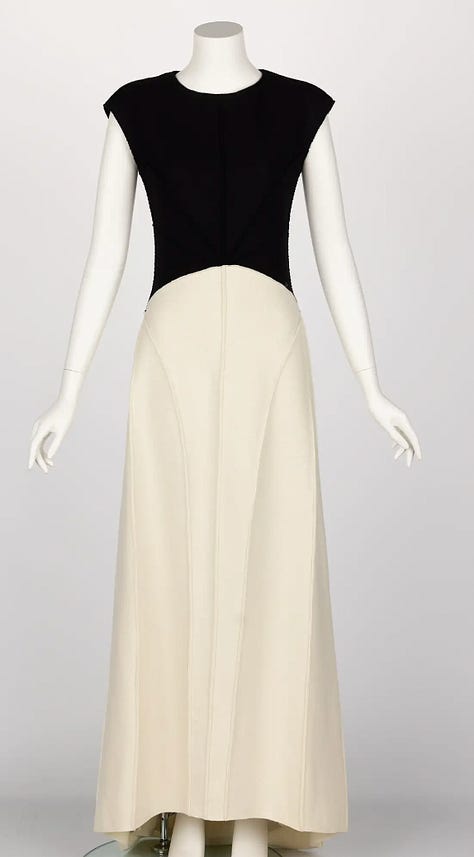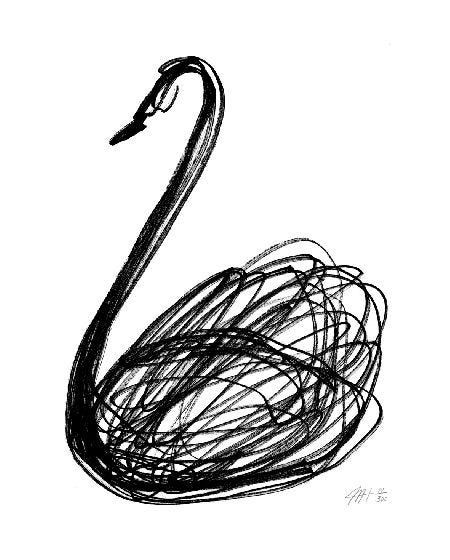The Swans' Way
The upcoming release of Ryan Murphy’s FX series FEUD positions the Swans as a timely, and perhaps obvious, topic to cover. The Swans, who like their counterparts in nature were impossibly beautiful, are all over the place now, but they’ve been with me for decades, and I have a personal connection to their storied images.
When I was 14, my mother, Deborah Davis, was writing Party of the Century, her bestselling anatomy of Truman Capote’s Black and White Ball. Instead of coveting Lindsay Lohan’s low-rise denim, or the “are you there, skirt, it’s me, Paris?” minis worn by the most famous Hilton, I was fascinated by the enigmatic women whose faces decorated the walls of my mother’s office. Even then, they became the foundation of my mood boards for years to come. What made the Swans famous in 1966, intriguing to a fashion-loving teenager in the early 2000’s and iconic in 2024? Why are they timeless when everything else is a fad? Here, I’ll break down the components of their individual signature styles, and share a curated selection of vintage pieces that might have been in their wardrobes then, as well as current pieces I imagine they might wear today.



Personal style originated with them. Each of these women represented a distinct style archetype and used fashion to communicate their unique personalities and preferences. They worked closely with designers to create and curate a selection of special pieces that fit their specific narrative and represented their vision, not the reverse. To some, this unwavering commitment to a particular fashion archetype may seem rigid, but it actually provided a framework for experimentation–a rope of classic pearls worn on the wrist, a tailored jacket studded with decorative pins, a scarf tied around a handbag, an evening fur styled back to white denim and flats – and allowed them to operate independent of trends and outside influences. Unlike today, when everyone can easily identify and access every ingredient in someone’s style recipe, exclusivity and subtlety were valued. The impact of their fashion choices was greater than the sum of its parts, it wasn’t what they were wearing, but how they were wearing it, which ultimately makes a look harder to replicate.
Maybe it’s the role of social media, or the fact that only a handful of stylists are responsible for shaping the images of the biggest celebrities and fashion influencers, but despite the unlimited access and options available today, there is a sameness and absence of personality in contemporary fashion. Babe, Lee and C.Z. managed to express their individuality despite living in the same city, attending the same events, and having the same level of access, (and funds!), which I think really underscores the importance of having a signature style and a discerning point of view.
They didn’t have the ability to change what they didn’t like about themselves the way that we do. No filters. No injections. Makeup was basic. No contouring. No aerobics. They had to identify their flaws and assets, and work with what they had. Essentially, they were their own clay. The result was a highly personal look, enhanced by a good dressmaker and carefully chosen accessories.
They lived IRL. They did it all to make an impression in life, not to make an impression in a photograph (or in our case, on Instagram). It was 3-D.
Self curation was their full time job. Looking good was a full time job, but it was their only job. What to wear may have been the only decision they had to make that day, but every ensemble was created with effort and intention, even if the occasion was just lunch!



























Social Studies
After the success of In Cold Blood, Truman Capote was catapulted into stardom securing his place as a fixture in high society and a celebrity in his own right. He developed a circle of female friends, supporters and trusted confidantes whom he affectionately called his Swans. Among them were Lee Radziwill, the sister of Jackie Kennedy Onassis, fashion editor and socialite Barbara “Babe” Paley, avid gardener and equestrian C.Z. Guest, and international best-dressed list fixture Nancy “Slim” Keith. Joanne Carson and Ann Woodward, (who technically wasn’t a Swan) are also depicted in the series, added by Ryan Murphy purely for dramatic value.
1975 marked the beginning of Capote's social suicide when he agreed to publish four chapters from his unfinished novel “Answered Prayers” in Esquire magazine, specifically the chapter entitled “La Côte Basque ’65.” The text, a portrait of mid-century high society, was based in part on the dysfunctional personal lives of Capote’s friends– including his beloved Swans, and exposed their most intimate secrets. Viewed as the ultimate betrayal, the release of Capote’s content more than ruffled a few feathers. The much- discussed scandal and its aftermath is the focus of Ryan Murphy’s FEUD, which premiers on FX TONIGHT.





